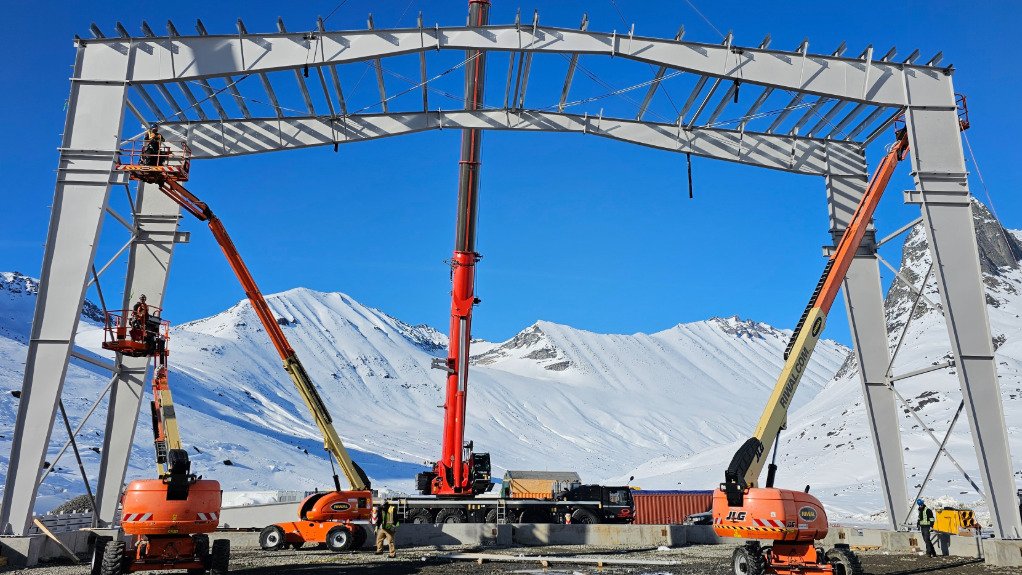Mega mining projects face several risks; however, these risks can be mitigated with a competent and effective project management approach that addresses all project knowledge areas in a fit-for-purpose manner, reports engineering consultancy VBKOM principal study manager Pieter Olivier.
Olivier elaborates that key risks include disruptive scope changes and additions, construction cost overruns, extended execution timelines and prolonged ramp-up periods, resulting in reputational damage, unachievable operational metrics, value destruction and critical future interventions.
VBKOM specialises in technical project and risk management, tracking mitigation progress and ensuring appropriate responses for each risk level, he notes.
This approach is supported by a comprehensive operational readiness programme that aligns stakeholder expectations and secures buy-in from all parties.
VBKOM also follows front-end loading (FEL) guidelines, adapted to a client’s requirements, and conducts quantitative risk assessments to accurately assess risk levels and incorporate them into cost estimates and execution plans.
VBKOM technical delivery executive Strauss Oosthuizen explains that mining project management involves coordinating various disciplines – such as geology, engineering, environmental and finance – along with external stakeholders and end-to-end mining value chain drivers that can impact, or be impacted, by a project.
Further, mining projects often span multiple years, facing challenges such as ensuring cost-efficiency to move the project to the next approval stage, maintaining investor support during commodity price fluctuations and integrating solutions across disciplines.
“The solution must not only support the best financial outcome, but also consider the risks and throughput drivers for various options,” says Oosthuizen.
He warns that key project team member turnover, as well as business direction or market changes during delays in approvals or project funding, can lead to costly scope changes, with projects sometimes requiring restarts owing to misalignment between design and decision requirements.
“As the bankable feasibility study (BFS) phase’s intent is to only improve the design and cost accuracy, optionality investigations may struggle to fulfil the design and decision requirements of the previous phase. Ultimately, the project may lose decision support, leading to a restart of the life-cycle after unnecessary delays,” explains Oosthuizen.
In terms of stay-in-business or expansion projects, conflicts can arise when sponsors push for a preferred solution based on prior analysis without fully exploring alternatives. This can then lead to issues arising during the BFS phase, disrupting a project’s development process.
In addressing these challenges, Olivier advocates for a “love the problem” approach, which focuses on fully understanding any project issues before deciding on specific solutions.
“Any project proposal must be tested against the latest operational plans and budgets, to prevent a project continuing with design and definition development only to find at a stage gate that the business case is now flawed,” he says.
To mitigate these challenges, Olivier stresses that mining project managers must possess adequate technical knowledge or exposure in multi-disciplinary engineering, operational research and financial fields and preferably hold a project management professional certification.
Further, managers should have the ability to align various technical disciplines and external stakeholders, while understanding resource code compliance and capital project FEL requirements.
In addition to these, mining project managers should have key skills such as integrating project control across areas including scope, schedule, cost, quality, risk, procurement and stakeholder management.
Oosthuizen adds that softer skills – such as emotional intelligence, negotiation and facilitation skills – assist a project manager to effectively drive the key project objectives and development process in diverse project teams and stakeholder environments.
Front-End Loading
Many large projects face significant value destruction owing to delays and cost overruns, which often results in project cancellation or major impairments, highlights Olivier.
As a result, FEL in mining project management has evolved over time, becoming increasingly adapted to mitigate risks associated with projects failing to meet their design objectives, deadlines and investment allocations.
FEL consists of three distinct phases, namely the concept study phase, which involves opportunity identification and assessment; the prefeasibility study phase, focused on development and conceptual engineering; and the BFS phase, which covers execution planning, basic engineering and front-end engineering design, he explains.
These phases serve as an approval mechanism and define a formal stage-gate process that enables stakeholders to make informed investment decisions, ensuring the project adheres to its intended standards and requirements.
Edited by: Donna Slater
Features Deputy Editor and Chief Photographer
EMAIL THIS ARTICLE SAVE THIS ARTICLE
ARTICLE ENQUIRY
To subscribe email subscriptions@creamermedia.co.za or click here
To advertise email advertising@creamermedia.co.za or click here















